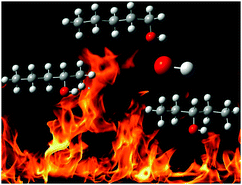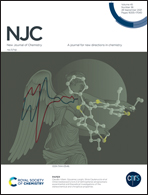Kinetics and mechanism of OH-mediated degradation of three pentanols in the atmosphere†
Abstract
Pentanols as potential biofuels have attracted considerable interest, and thus it is of great importance to gain insights into their combustion and atmospheric chemistry. Herein, the kinetics and combustion mechanisms of 1-pentanol, 2-pentanol, and 3-pentanol triggered by hydroxyl radicals were explored at the CCSD(T)/CBS//M06-2X/6-311+G(d,p) level. Sixteen channels were taken into consideration followed by acquisition of energy barriers. The rate constants, estimated by the multi-structural variational transition state theory along with the small curvature tunneling correction, are in agreement with the experimental values within 267–373 K. The results indicate that the location of the hydroxyl group in three pentanols does not affect their reactivity toward OH radicals because their rate constants are close to each other. However, the locations of the hydroxyl group are significant in controlling product ratios in a wide temperature scope. The alkyl chain length and temperature are the key regulatory factors for lifetime of alcohols and are more obvious than the positions of functional groups in determining alcohol persistence. The fate and reactivity of hydroxyperoxy, hydroxyalkoxy, or alkyl intermediates were studied, and stable products are organic acids and aldehyde compounds. They are the precursors of secondary organic aerosols and photochemical smog that are harmful to the environment. This work provides a necessary reference for the modeling of pentanol combustion and evolution.



 Please wait while we load your content...
Please wait while we load your content...